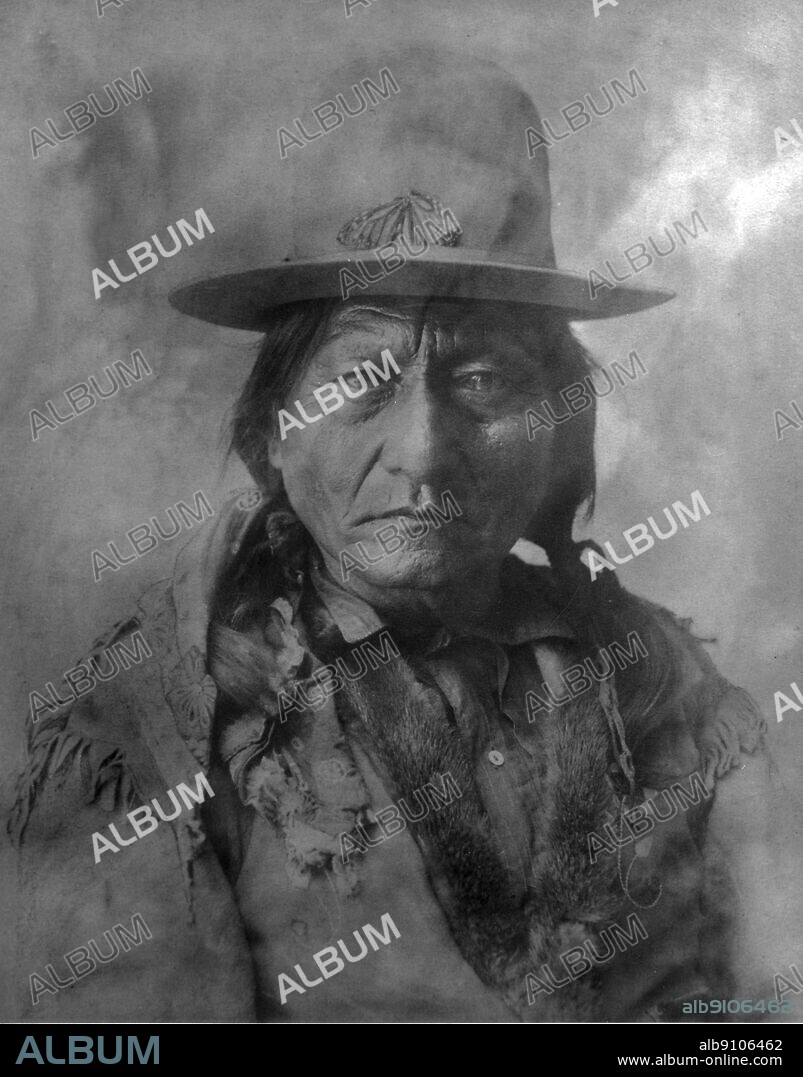alb9106462
Portrait of Sitting Bull. Sioux. Hunkpapa Sioux (1831-1890). Sitting Bull, Lakota Medicine Man and Chief was considered the last Sioux to surrender to the U.S. Government.. In the early 1850s, the Lakota (Sioux) had begun to feel the pressure of the white expansion into the Western United States. Sitting Bull did not participate in the resistance until 1863 when the settlers threatened the Hunkpapa hunting grounds. He had distinguished himself from an early age as a leader, killing his first buffalo at ten and "counting coup" (touching the enemy without their knowing) at fourteen. Because of his leadership during these times he was named principle chief of the Teton Sioux Nation in 1867.

|
Ajouter à une autre Lightbox |
|
Ajouter à une autre Lightbox |



Avez-vous déjà un compte? S'identifier
Vous n'avez pas de compte ? S'inscrire
Acheter cette image.
Sélectionnez l'usage:

Légende:
Voir la traduction automatique
Portrait of Sitting Bull. Sioux. Hunkpapa Sioux (1831-1890). Sitting Bull, Lakota Medicine Man and Chief was considered the last Sioux to surrender to the U.S. Government.. In the early 1850s, the Lakota (Sioux) had begun to feel the pressure of the white expansion into the Western United States. Sitting Bull did not participate in the resistance until 1863 when the settlers threatened the Hunkpapa hunting grounds. He had distinguished himself from an early age as a leader, killing his first buffalo at ten and "counting coup" (touching the enemy without their knowing) at fourteen. Because of his leadership during these times he was named principle chief of the Teton Sioux Nation in 1867.
Crédit:
Album / TopFoto
Autorisations:
Modèle: Non - Propriété: Non
Questions sur les droits?
Questions sur les droits?
Taille de l'image:
4491 x 5725 px | 73.6 MB
Taille d'impression:
38.0 x 48.5 cm | 15.0 x 19.1 in (300 dpi)
 Pinterest
Pinterest Twitter
Twitter Facebook
Facebook Copier le lien
Copier le lien Email
Email
